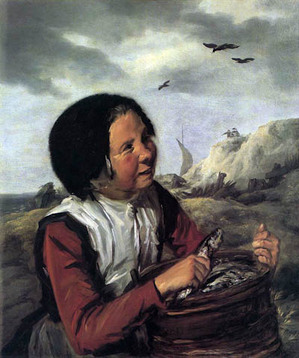 A few thoughts after a trip to the Metropolitan Museum* yesterday:
A few thoughts after a trip to the Metropolitan Museum* yesterday:
- Based on an unscientific, mid-afternoon observation, which admittedly can’t be made too much of, the hike to $25 for the suggested admission price on Sept. 1 either was not known to the people who went on Labor Day, or didn’t deter many. The museum was pretty packed in several areas — the Frans Hals exhibit, the European paintings permanent galleries (some were “benched” off, and closed), the European decorative arts galleries and the Medieval galleries. Also — the store, where there was a short line for the cash registers.
- Let me be clear: I’m not in favor of high admission charges, but the Met knows its costs ($40 per visitor) and this is a suggested price, not mandatory. The museum has to find the money somewhere.
- The Hals show includes the painting above called “The Fisher Girl” (1630-32), which the label notes was sold by the Brooklyn Museum* in 1967. It is now in a private collection, and hasn’t been seen in years. Out of curiosity, I later looked in The New York Times Archive to see if the deaccession then had caused a fuss. I couldn’t even find a reference, let alone a fuss, which makes me wonder if the Brooklyn sold it privately, unannounced — if so, I strenuously object. The only reference that I found to the deaccession via a search, and it was a disapproving one (thankfully), came in 1976, when Thomas B. Hess wrote in New York Magazine, in a column called “scandals and atrocities”:
Some years earlier (1967) another director sold a unique Old Master (Frans Hal’s Fisher Girl, to be exact) to expand the museum’s considerable 19th century American holdings. In short, unwise leadership, while attempting to cope, succeeded in exacerbating certain problems…including disillusionment in parts of the community with many of the standards traditionally associated with a great museum.
According to the Brooklyn Museum’s online records, it seems to have given the Hals painting to Wildenstein for sale, along with still lifes by Cezanne and Rodin. The Brooklyn does have another Hals, a better one, but still…
This is why we need transparency in deaccessioning. I love American art, but I’d still like to know what the Brooklyn bought with those funds.
*I consult to a foundation that supports these organizations.


